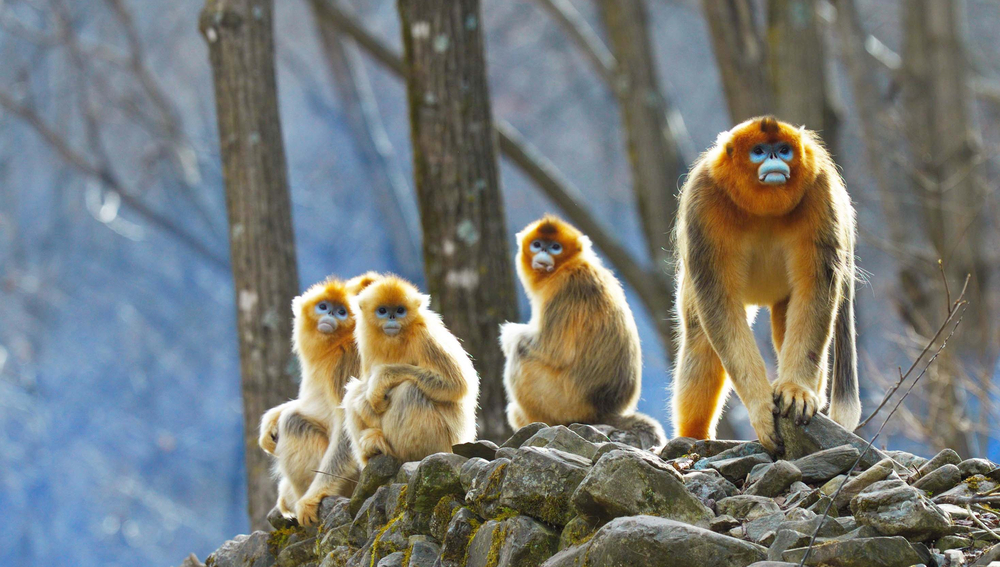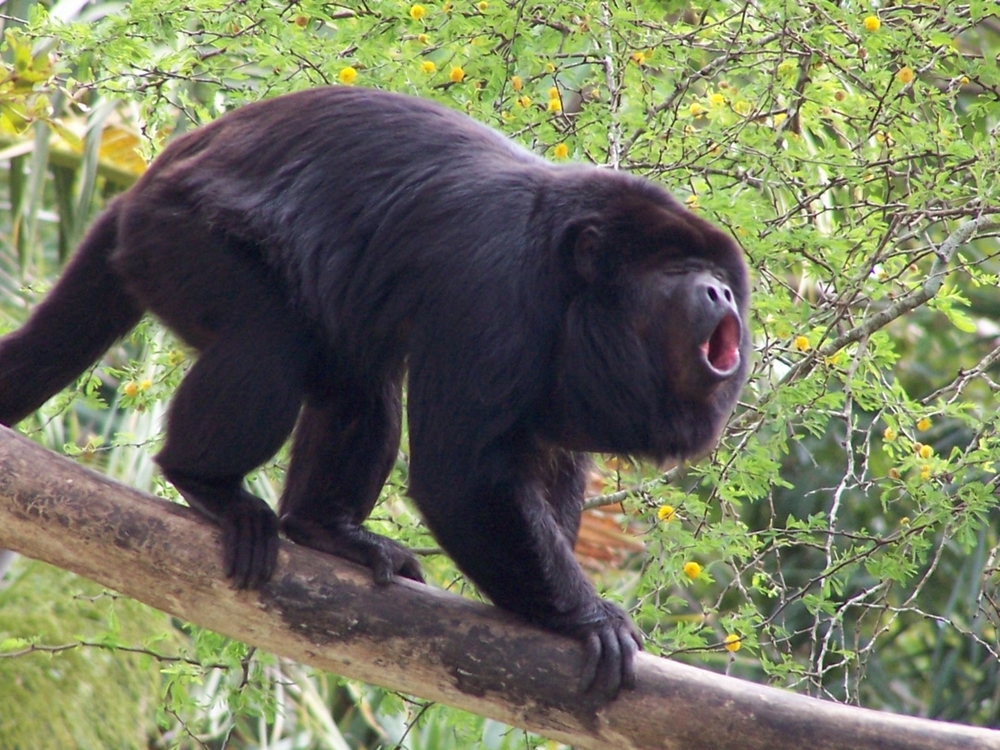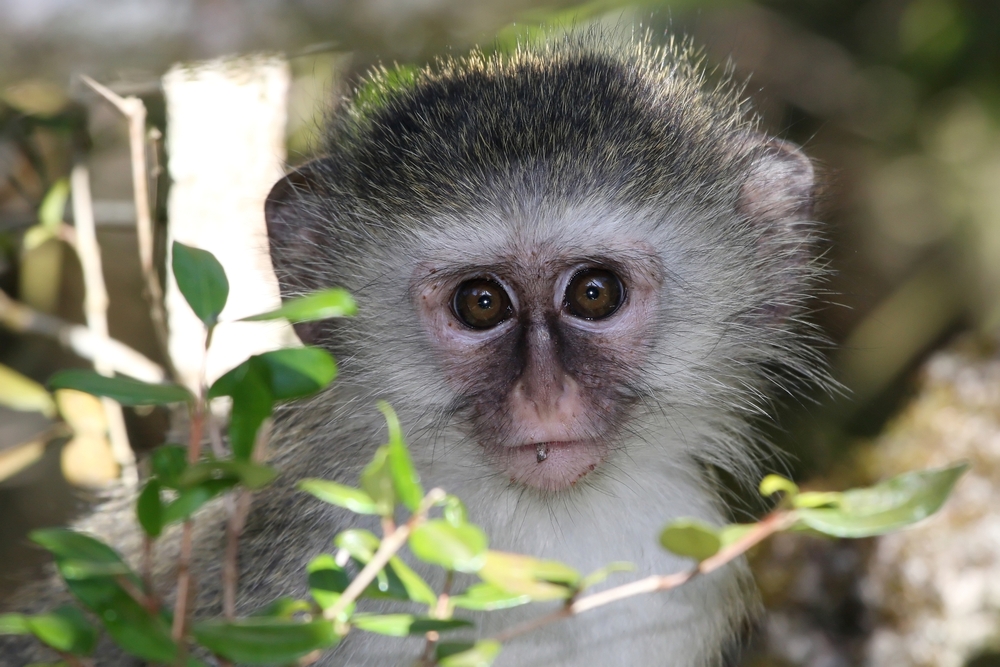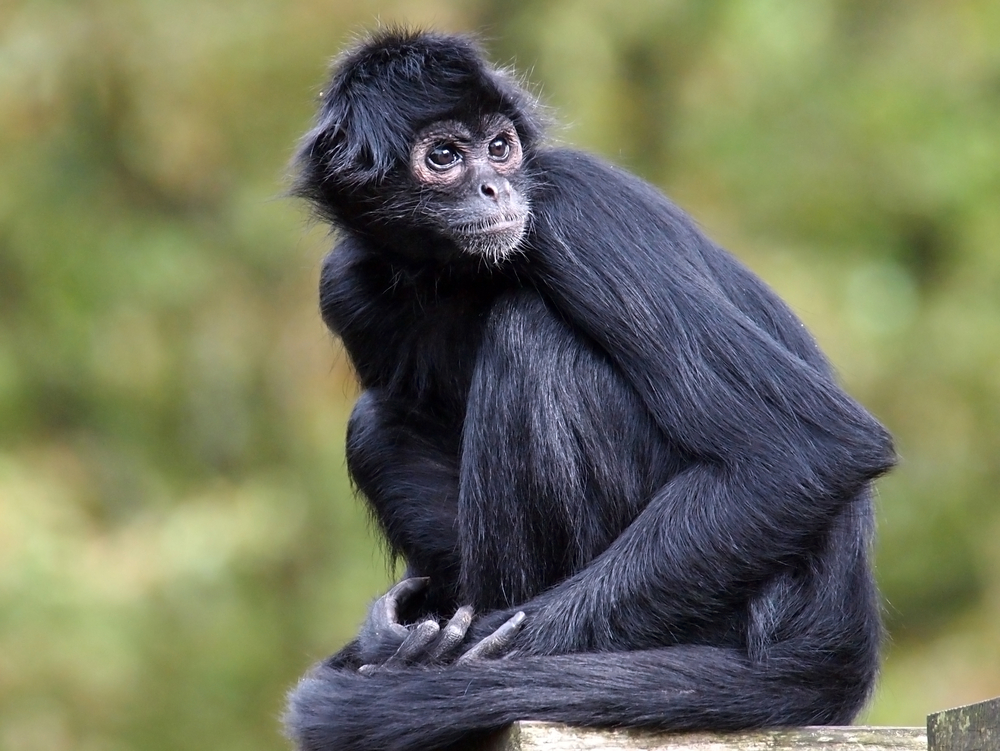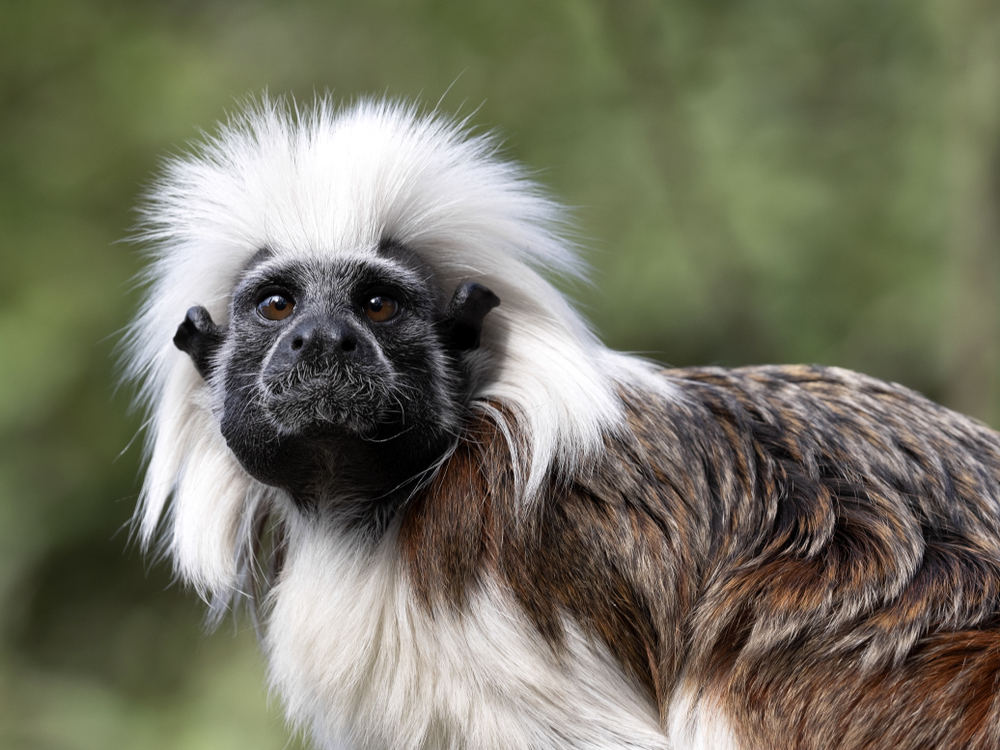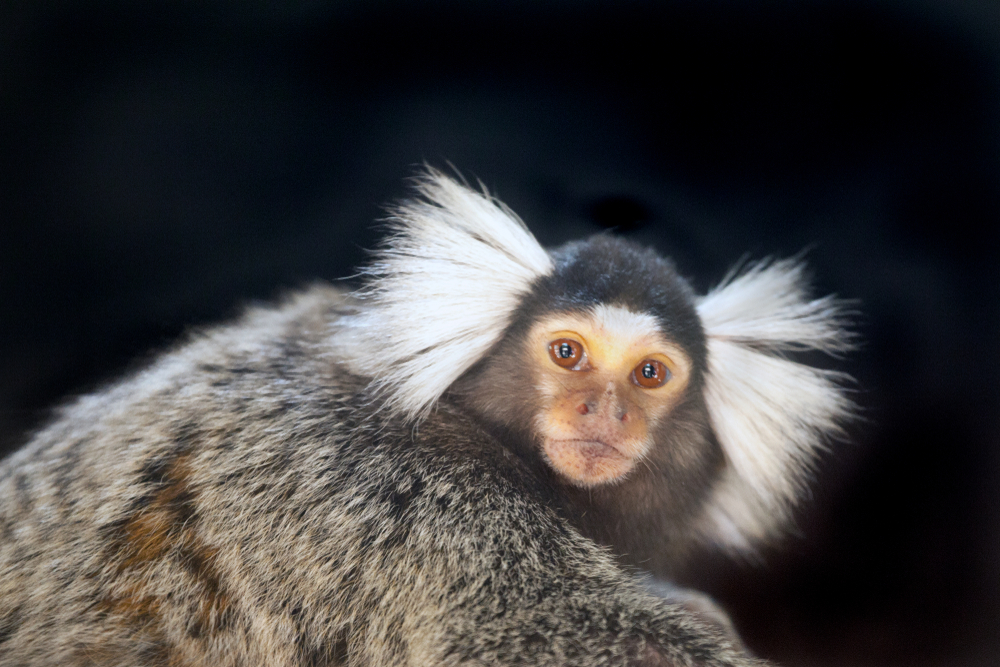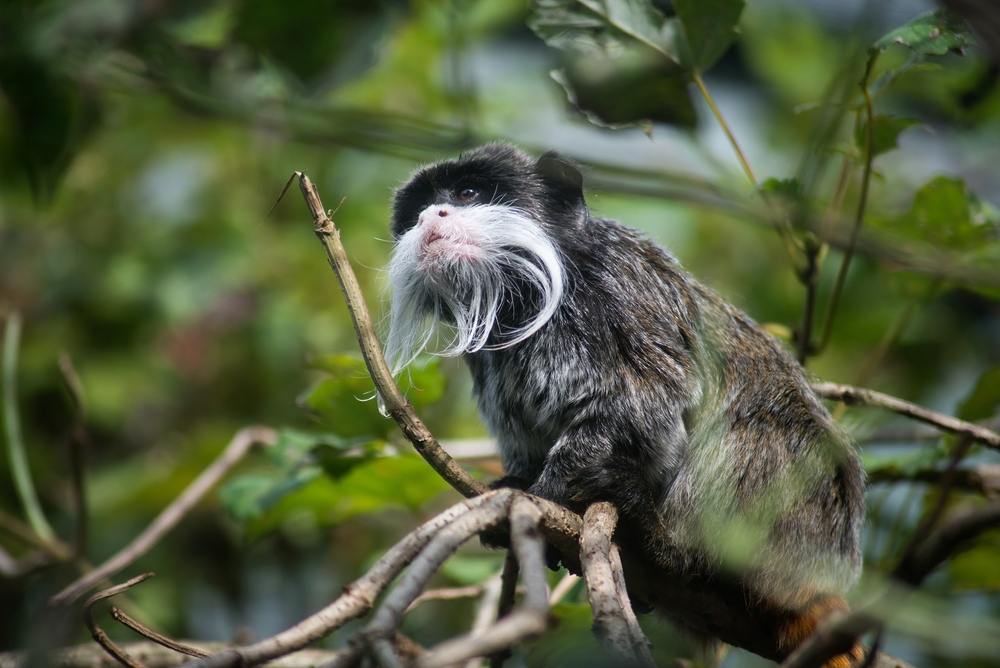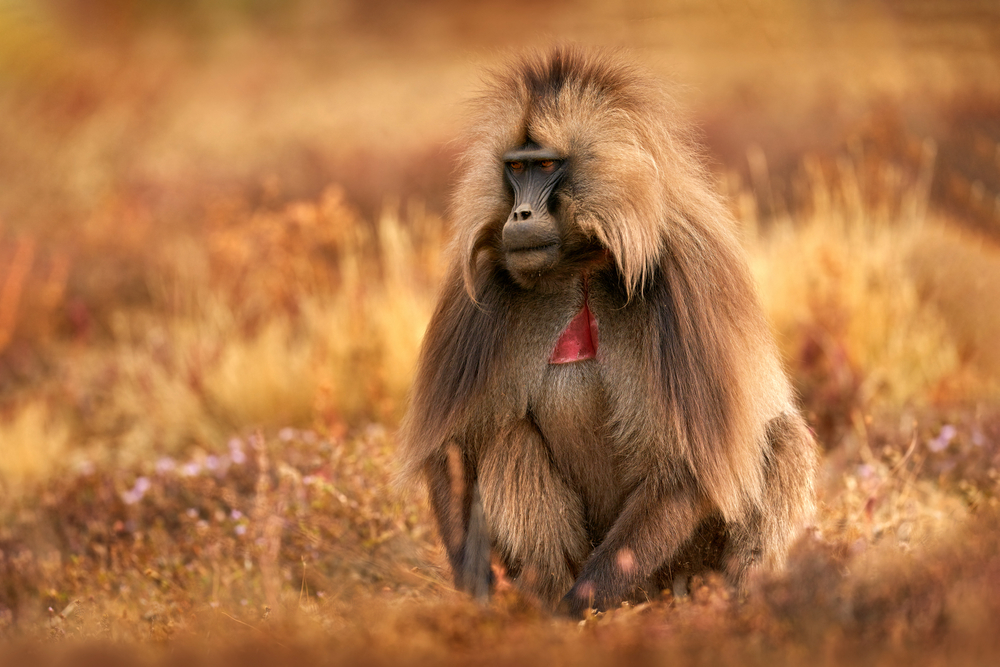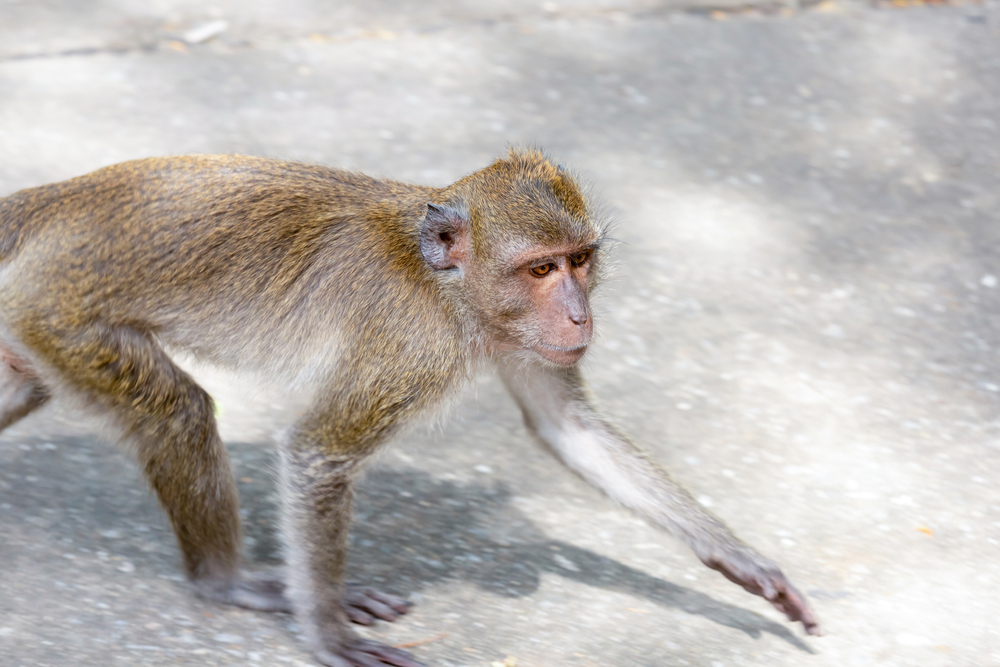About
#Mammals
The golden snub-nosed monkey (Rhinopithecus roxellana) is a striking and endangered primate native to the temperate mountain forests of central and southwestern China. A member of the Cercopithecidae family, this monkey is named for its short, upturned nose and vibrant golden-orange fur, which provides insulation in the cold, high-altitude habitats it calls home. It inhabits elevations ranging from 1,500 to over 3,000 meters (4,900–9,800 feet), enduring frigid winters and heavy snowfall.
Adults can weigh between 10–20 kilograms (22–44 pounds), with males being significantly larger and adorned with a long, flowing mantle of golden and white fur. Both sexes have bright blue faces devoid of fur, creating a stark contrast with their warm-colored coats. This adaptation not only provides warmth but also contributes to their unique, expressive appearance.
Golden snub-nosed monkeys are arboreal and highly social, living in large multi-level troops that may include hundreds of individuals. These groups are organized into smaller family units led by a dominant male. Their diet varies seasonally and includes leaves, fruits, seeds, bark, and lichen—making them one of the few primates that rely heavily on lichen as a winter food source.
Communication within the group includes vocalizations, body postures, and facial expressions, all contributing to strong social cohesion. Despite their resilience, these monkeys face serious threats from habitat loss due to logging, human settlement, and climate change. They are currently classified as Endangered by the IUCN.
Conservation programs in China, including protected nature reserves and captive breeding efforts, aim to safeguard this iconic mountain species and its increasingly fragmented forest habitat.
Threatened:
Extinct
Critically Endangered
Endangered
Vulnerable
Near Threatened
Least Concern



































































